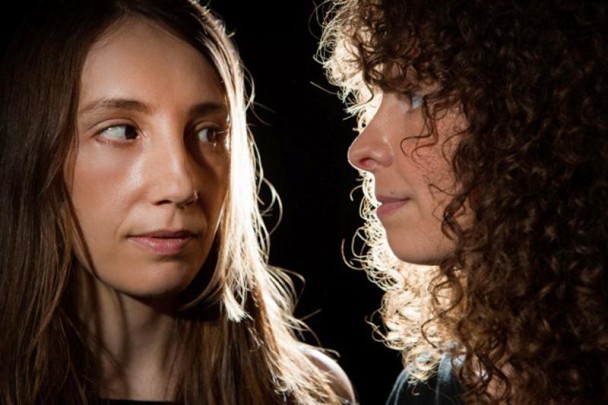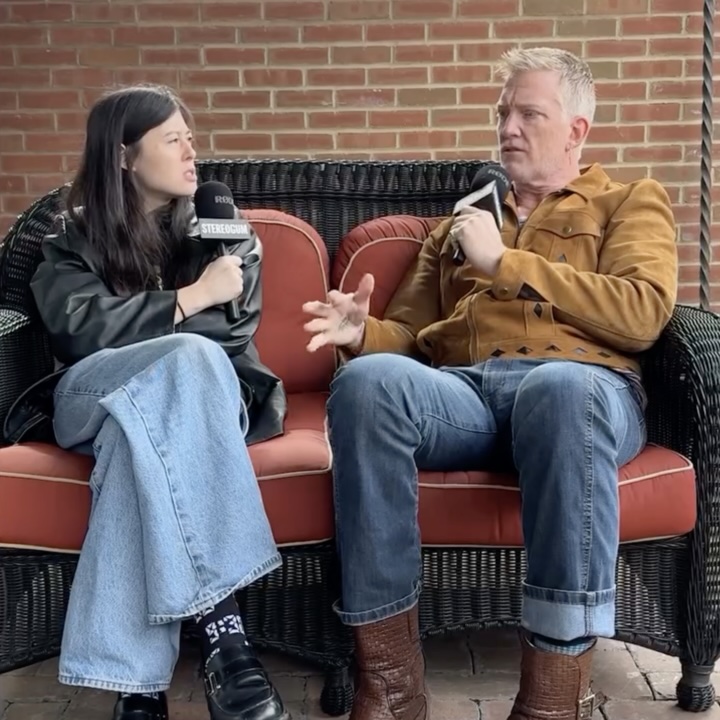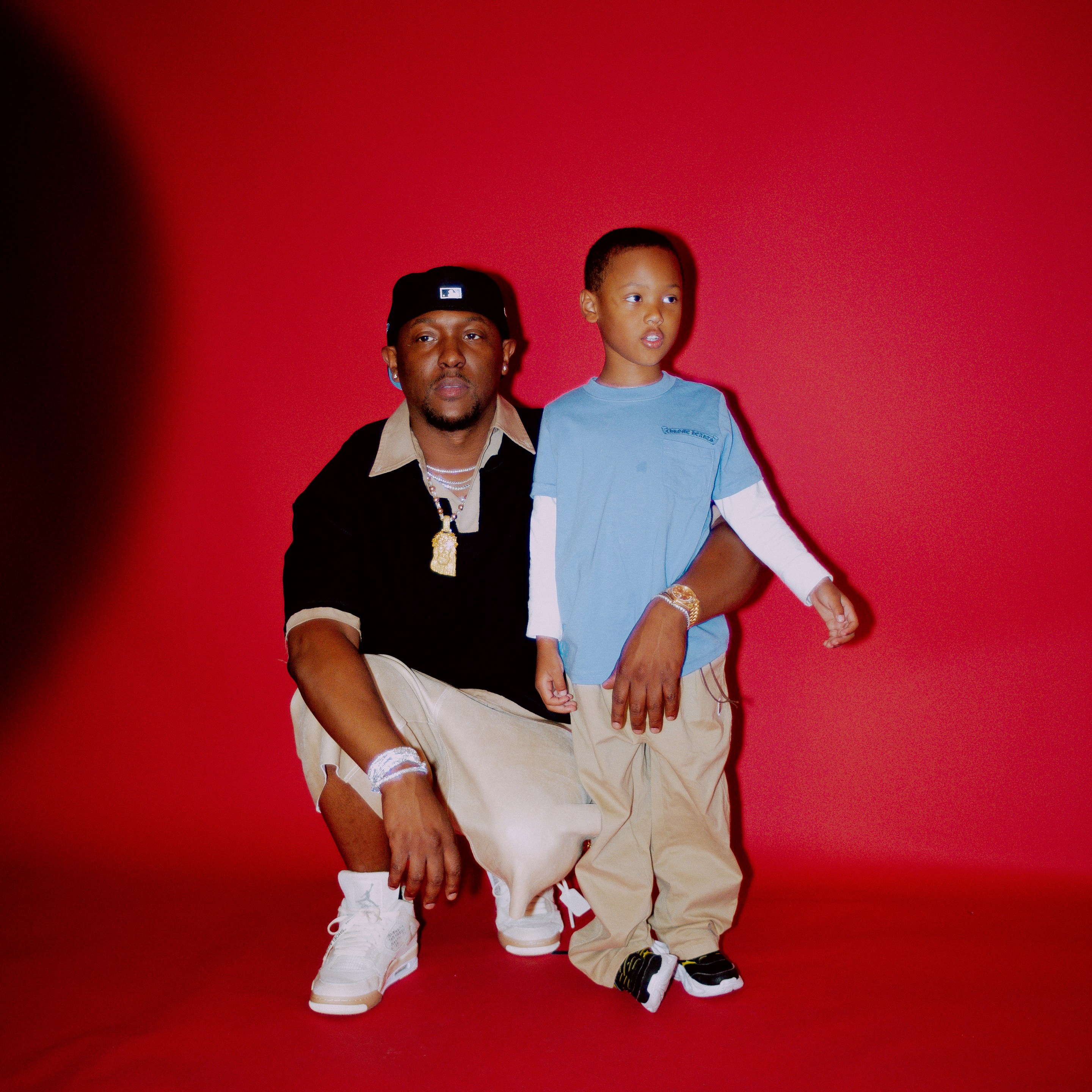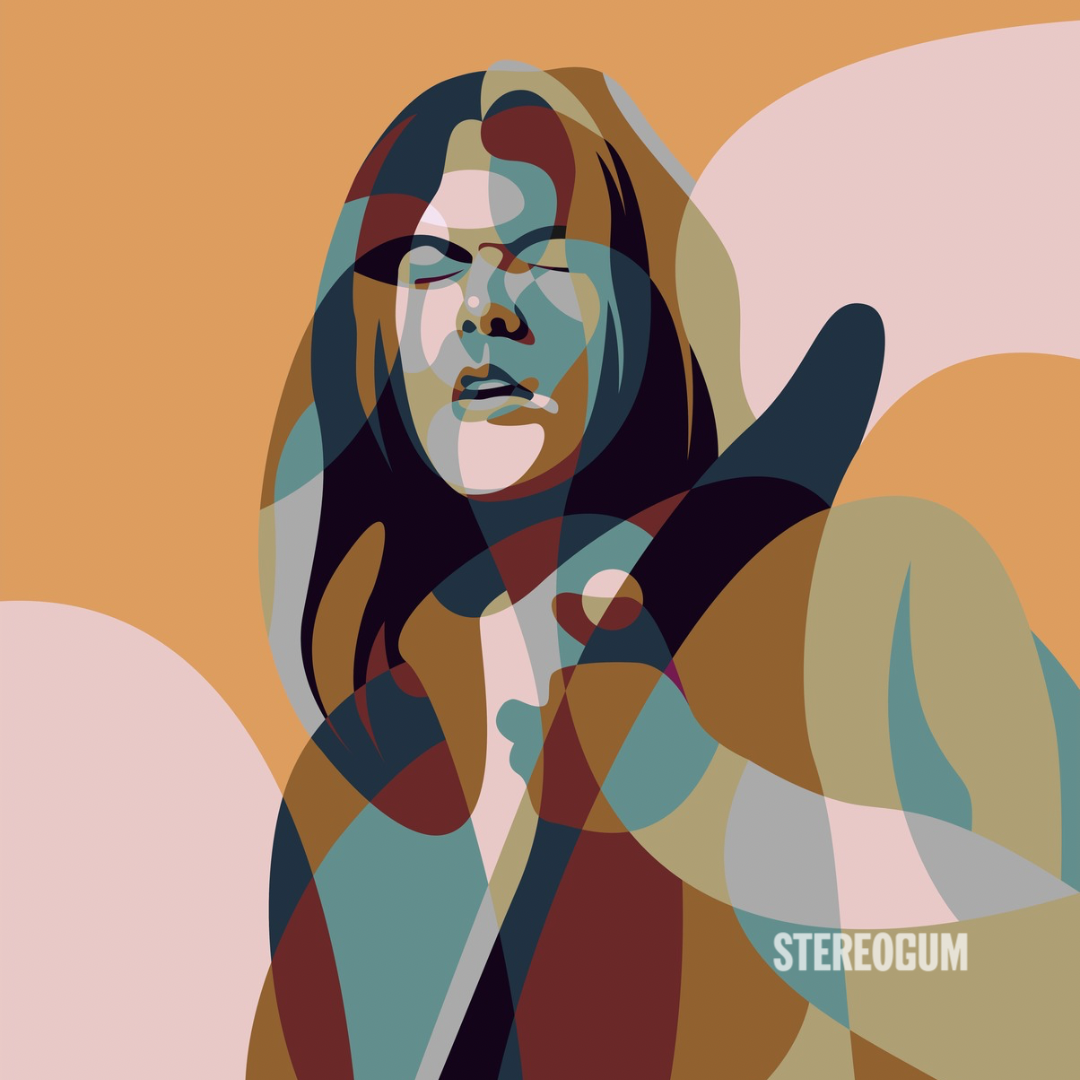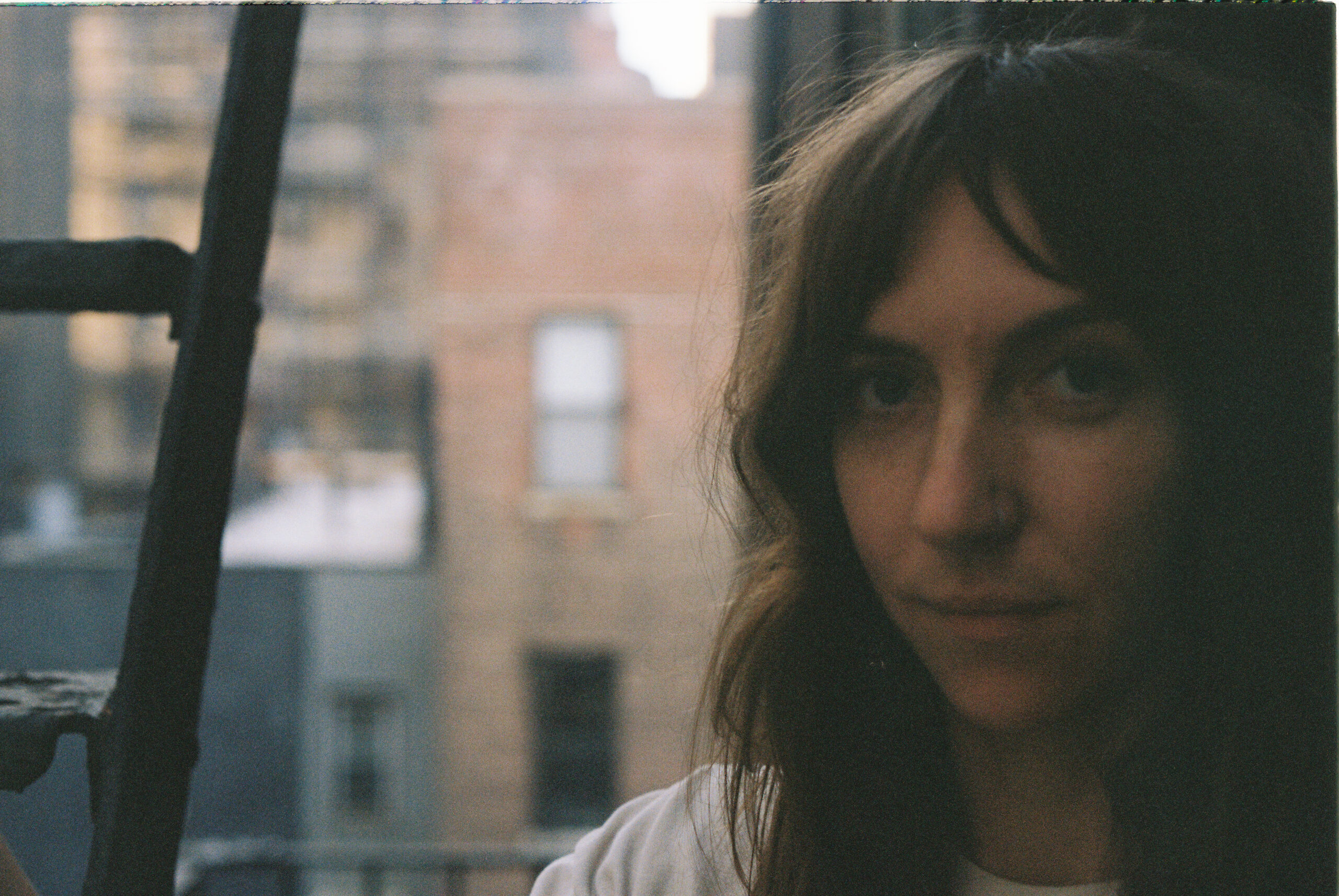Khaela Maririch has been inventing new sound, be it in her spartan, lo-fi missives as Get The Hell Out Of The Way Of The Volcano, or early recordings as the Blow. As that project has evolved, especially when she joined forces with Jona Brechtolt (now of YACHT) for 2006's Paper Television, she's flipped the idea of what to expect from synth-pop. Whether it was the trembling riffs of the album's buoyant "Parentheses" or the drumline-heavy "The Long List Of Girls" (which Maririch referred to as her "Beyoncé song" at a 2005 performance at Sarah Lawrence), her songwriting is teeming with innovative idiosyncrasies. Earlier this month, Maririch released a self-titled album with longtime partner and on-stage member of the Blow, artist Melissa Dyne. What the two have crafted is the most visionary of the project's releases to date, the sounds on the album concocted in the duo's sonic imaginations and, ultimately, invented by them through sample manipulation of their own and collaborators' live recordings. The two sat down with us over tea and toast to talk about their new live show set-up, gearhead-minded recording, and the state of female producers.
On the new live show:
MARIRICH: I've tended towards contemplative in the shows that I've [played]in the past, but the interesting thing has been taking the songs and playing with them in context [that leans] towards monologues and the energy level is on the more contemplative side. [But] the energy that [Melissa and I] came out of when making the record is just like, Wow! Wicked explosion. Also we're performing the music in more of a live way where we can actually change the music a lot more and riff with each other, which is something that we haven't spent a lot of time doing. A lot of the performance now is us kind of riffing with each other, which has been fun -- sharing the experience of working together. [The music] is sample-based, so we're going to be playing around with that, and we have all of these modular synths now and they're doing a lot of stuff, so we're trying to take the studio experience into the live show a little bit which I think will be fun [for the audience] and for us to play around with. Melissa has it set up so we can really freestyle which is really exciting. In the past, the shows have been a little bit more like -- we knew where we were gonna go every time, but now it's like these are jumping off points for, like "Let's do a new song!" right then and there. It's exciting.[W]e [set up the stage] different ways, but a lot of times Melissa's on a riser that's the same height as the stage across from the audience so I can look across the audience and see her and she can see me as, opposed to us seeing each other and the audience watching us horizontally. We're communicating and sending energy back and forth and the audience is in between like we're hugging them, like we're the parents and they're like the kids or something. It's totally the energy that gets catalyzed between us and then getting the crowd pumped up then throws more energy back to us.
On sound innovation and recording:
DYNE: We were thinking about [evolving the Blow’s sound] while we were making [the album] because we performed so much together. When we're laying down the songs and doing the songs we can be like, “Let’s think about making a sound in this particular way that is kind of spatial." We know what it could sound like in space and what it's gonna sound like on record, which is fun, it's different [for electronic music]. It's not different for people who play instruments that are traditional, but for us it's different. It's kind of a void, you're making the sounds from scratch --
MARICICH: Yeah! We're also sort of not afraid to have no idea of the way you're supposed to go about it which was, in the moment, pretty terrifying. But if someone tells me about a record where, "These two girls made this weird record. They just kind of made all these weird sounds and they didn't really know what they're doing exactly," I would think that was really cool. When I apply it to myself I'm like, "Oh god we did you a weird thing…that I'm pretty proud of." We didn't have a set idea and would kind of make one version of the song and then be like, well, what if we totally re-do it completely from scratch now. A totally different approach – I mean [Melissa knows] what [she’s] doing more than I know, which isn't [even] fair to say, since [she’s] super technical and professional. [She stays] up all night long figuring out on the Internet how you go about making the synthesizer work or making a delay work so the timing works perfectly.
DYNE: For me it was, texturally, when it got to a certain point where there was a lot of layers and a lot of give, you could spend time with it's like, "We can leave that alone, and we can move on and make another idea." Like we're done with that idea -- it was kind of about texture and space.
MARICICH:The whole process feels like this smear, and [our friend] Marina got to see the whole smear process. People hearing the album, they're hearing it in this one incarnation like a stop motion. They're getting the one image of this stop motion, but I think the live shows will be a continuation of it because they can keep changing and our ideas about our sensibility and our demeanor is different now that we're done with it.
On being female producers:
DYNE: I find it interesting in how many people don't want to think we're producers or that we're making the music. People will be like, "Are you the engineer?" No. We produced the – we made the…are you crazy? And it's weird that it's first thing [we get asked]. They don't want to think of two women producing they just [can’t handle it]. example, Grimes – and us.
MARICICH: Joni Mitchell produced all her records which are fucking awesome.
DYNE: Neko Case produces all her records.
MARICICH: Kate Bush produces all [her] stuff and it sounds fucking awesome -- but [these women are] not known as producers. I have to say, though, for as much as we get that, the two times we did [gear clinics], dudes come up and they stare at you and they stare at your gear and they start to like they do this thing in the past where they totally dork out and they look at you like, "What's she doing!? It's so cool." You can tell they want to talk to you, but you are kind of imposing. We did this little example [of sound-creation] [and] they were like, "That girl’s like a mad scientist!" They geek out hard, in a way that's never been a part of it. And there's dudes that are ready to be like "You're rad!"
DYNE: There's a lot of girls out there doing cool stuff, and I think [they’re seeing] it more. It's not just the guys with the crazy gear.
On gear:
DYNE: I'm a huge gear head. I love it.
MARICICH: She spends hours and days on her iPhone looking at like synthesizer possibilities. Also, it's kind of like, what can you actually get? There was this synth that we really wanted, and we looked at it online, and we tried on eBay for weeks on end to get it and we couldn't. So we found this other really cool synth and they had it for sale in New Jersey so we drove there and got it. Then Melissa's friend...had to move…they got deported or something and left all these synthesizers in Los Angeles. He was just like, "Do you want this?" [and] sent us this really cool old ’80s synthesizer. It's gotten cool since then but at that moment it wasn't really cool [to use yet]. Is it a secret? Melissa's the one who decides whether we do or don't talk about the synthesizers we use. But anyways it was just this random synthesizer that wasn't cool and then Melissa had some weird pat sounds that were like, the horns [goes Broo-broop] but Melissa hacked it and figured out how to make really cool sounds with it. So [what we used for the album was] partly what we were able to get access to and then people we knew who we could get cool samples from.
DYNE: A lot of it would be like, "We want to make this sound." And it's very abstract so it’s good that we work together because the way we talk about it is like, "We want to make this thing that goes, 'Na na na na na na'" and [collaborators look] at us like, "Huh…what kind of instrument is that?" And we're like, "I don't know." And we have to think like, OK, we'll start with a bass and then we'll layer six different synthesizers and literally just sit there and tweak them until they become a single instrument. And then we're gonna take that with four different delays and then we're gonna sample it. And we'd do that with everything. We'd do that with a guitar, but we need a guitar with only three strings, because I don't want to hear the other strings. I think both of us work really hard. We got to use a few different studios and we'd just come in and be like, "What do you have?" and we'd just come in and play with it. Like, let's do this backwards, and why don't we plug this in wrong. Let's re-feed the synth three times, even though that's not the right thing to do.
MARICICH: We're equally punk in that we'll just use what we have. We talked to different producers and thought we might go that way and the magic wasn't there, it was like we were led to doing it ourselves. It's like our heroes journey was like, You guys will make this weird thing, this epic record together without help cause we were ready to do it the easy way. I was like, "Sign me up, just make it sound cool, let's do this," but it wasn't right and it was just like, We're gonna do this ourselves." In our own weird way, so partly we're like punk and also like, "Fuck it! We'll just do it this weird way." But then we're also really conceptual, we wouldn't just go about it the easy way. And after we were done I was like, "Oh we could have gotten a couple instruments and then we'll only make the sounds these instruments make." We'd use a synth, but we kept being like, "I want this sound," and designing this weird notion of sounds and then trying all the instruments and being like, "That's not it, that's not it, but where are we going to find that sound," which made things really complicated actually so it's kind of like…it could have just been easier but instead [we] designed these things that are really hard to realize. Using your available means and having some weird concept of some other sound that [doesn’t] exist and trying to make it exist.
[videoembed size="full_width" alignment="center"][/videoembed]
The Blow is out now via Kanine Records.
